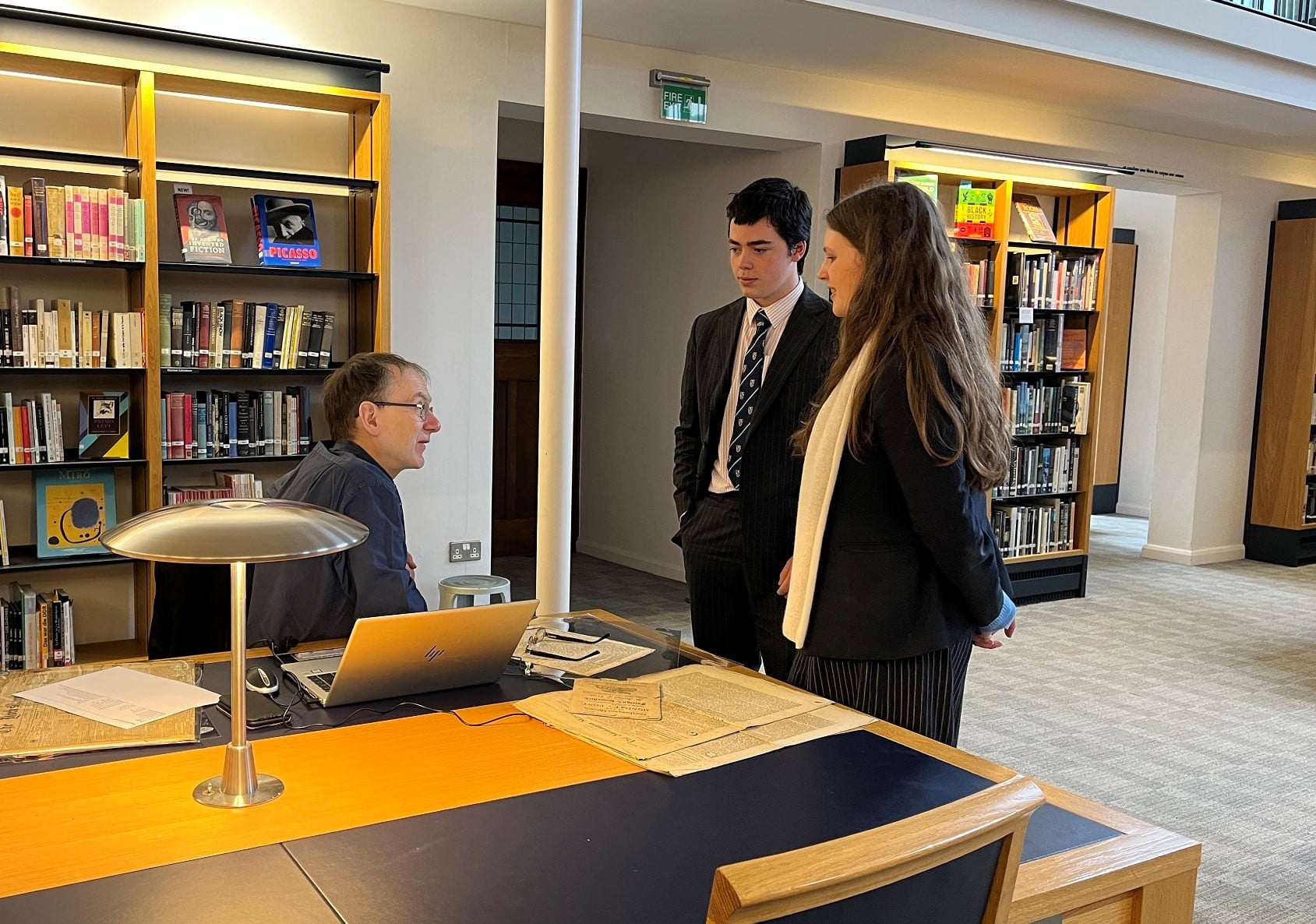Two Old Oundelians returned to lecture halls and the classroom this week. Although they work within two different disciplines, their theme of how networks allow people to communicate and societies to develop and thrive was a common focus of their talks to the Sixth Form.
Professor Andrew Pettegree (L 1975) has been generous with his time on many occasions. He returned to Oundle this week for a talk about The Book at War. His earlier academic career focused on the European Reformation. With that period as a starting point, he has since written ten books about the history of communication and the history of the book.
For his History Society talk he drew upon the place of the book in the history of warfare. Using a cast of ordinary people, he tracked their experience with books during wartimes: the publishers who adapted to paper shortages, censorship and the launch of cheap paperbacks; librarians who laboured to preserve collections but also kept resources available; active troops whose morale needed boosting; prisoners of war who had hours of time to read; civilian readers busy with the new demands of the home front. During wartimes, books and libraries are considered legitimate targets or acceptable casualties of bombing campaigns, and over many years, millions have been destroyed or plundered during wars. But the essential nature of published material remains indefatigable, and technology means that books can always be produced in even far greater numbers to continue communicating ideas down through the ages.
The next morning Andrew returned to an Oundle classroom, but this time as a teacher, where he introduced Lower Sixth pupils to the Universal Short Title Catalogue based at the University of St Andrews, where he is one of the directors. The USTC is a database of worldwide holdings of books printed with moveable type, published from 1450 – 1700. Using database filters to search by date, place and author etc, he showed how historians can assess the impact of early printed books, and how political and religious changes across England and Europe were reflected by the printing industry.

Following on from his earlier book, The Invention of News, he is currently working on an additional volume about the history of newspapers, and he spent time in the Cripps Library looking at a collection of 18th century Northamptonshire newspapers.

Adrian Fisher (B 1969) delivered the Sixth Form Lecture this week. He is best known internationally for more than 400 mazes around the world, from corn mazes and hedge mazes to an illuminated vertical maze design on a fifty-five-story Dubai skyscraper, and the maze at Blenheim Palace, reproduced on the five-pound note.

Mazes involve a network of avenues that move people from a start point to an end point. But the ambition of a maze designer is to confuse people, while having fun in the process. This ability to visualise and plan networks began with Adrian’s first career in industrial efficiency, where the aim is to move people between points A and B quickly, and this was the focus of his lecture.
Using schematic maps from across the world of train networks, metros, bus routes, airport runways and transport connections, he pointed to the well-designed projects that have successfully serviced cities and countries, and the projects that have caused congestion and inefficiency, hindered economic development, or just been pointless. He lamented what he thought was a preponderance of the latter. The baseline for success, he said, is planning. And with proper planning there should be the understanding of how to move people from their start point to the end without confusion: in any transport network, plans should prioritise nodes more than channels; longevity requires use of compatible, universal equipment.
Addressing the next generation of planners, designers, engineers and government officials, his lesson to Oundelians was to “get on with it” and be the ones who set the efficient standards and networks for future nation building.




